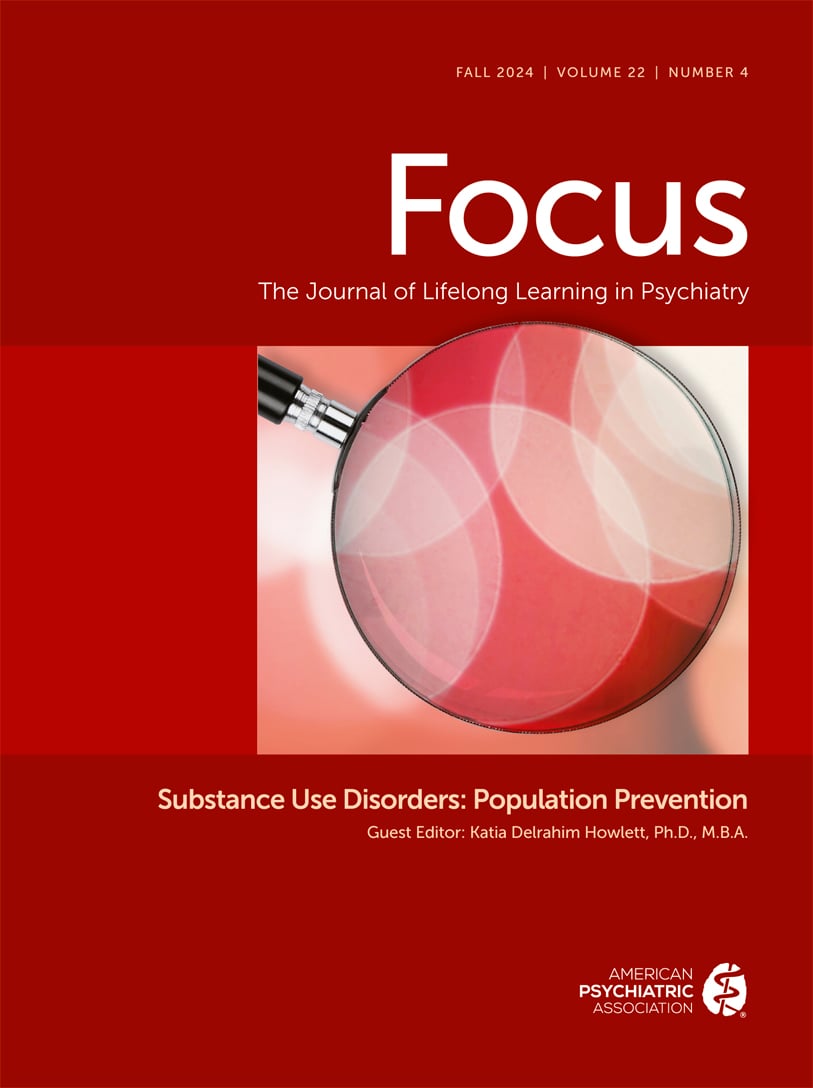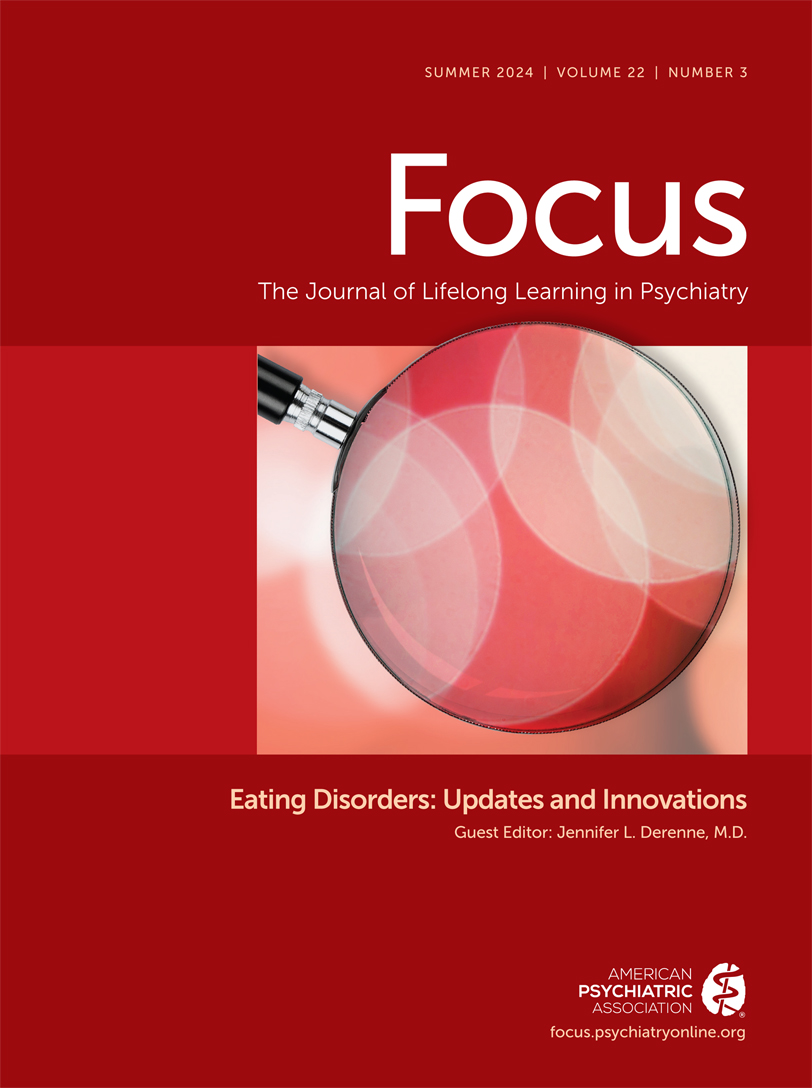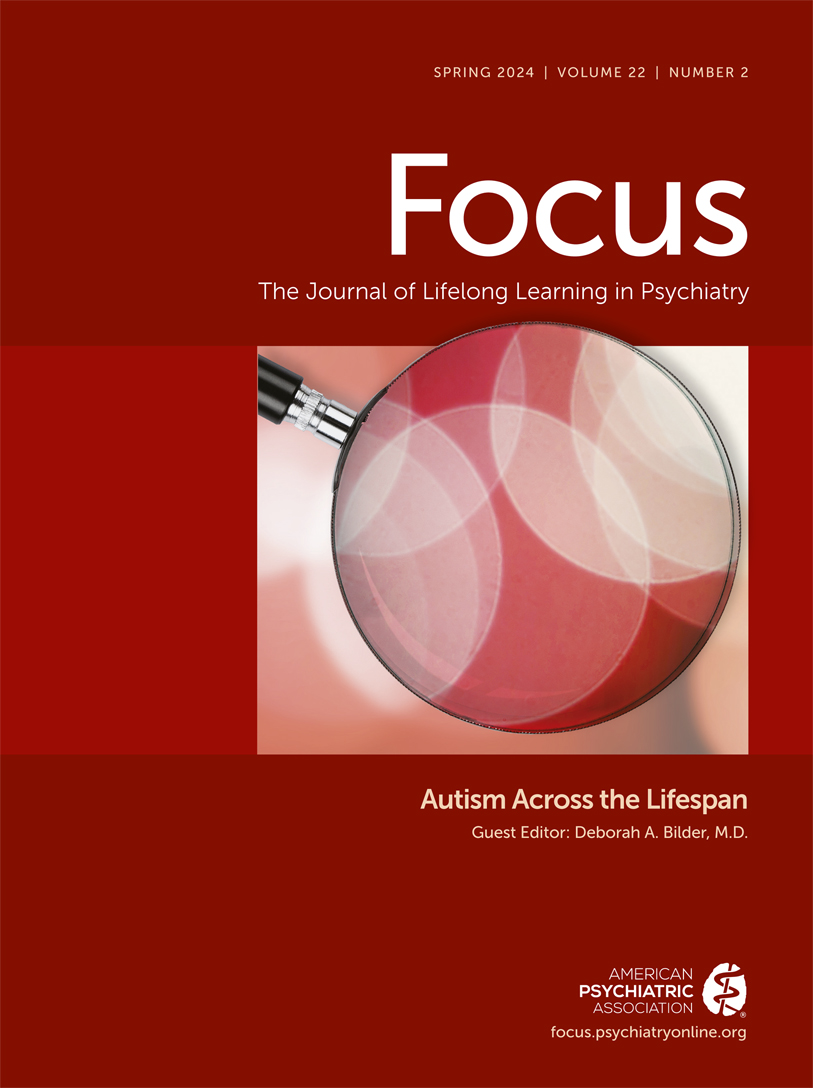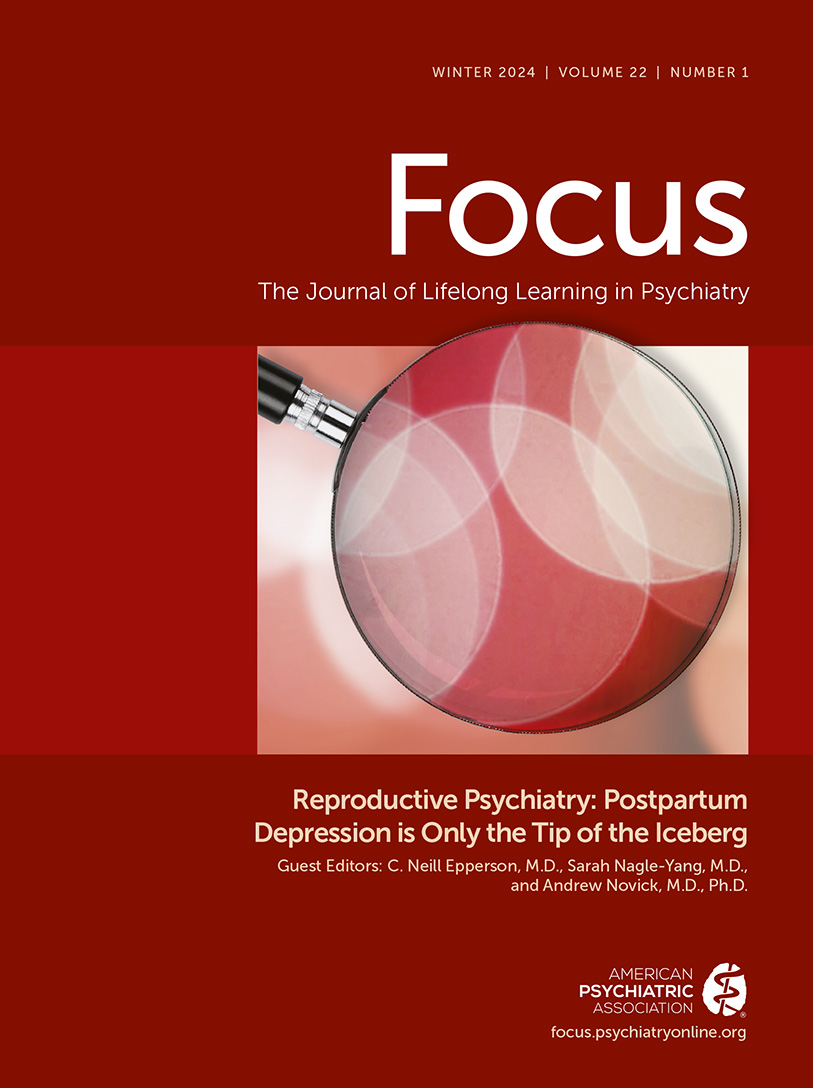Focus
- Volume 13
- Number 2
- April 2015
Clinical Synthesis
Publication date: 01 April 2015
Pages129–141Obsessive-compulsive disorder (OCD) has been given increased attention in DSM-5, receiving its own chapter. In this article, the authors discuss changes to the diagnostic criteria and symptoms differentiating OCD from other disorders. Two new specifiers, ...
https://doi.org/10.1176/appi.focus.130211Publication date: 01 April 2015
Pages142–147Obsessive-compulsive disorder (OCD) is a complex, multifactorial disorder with onset either in childhood or early adulthood. Lifetime prevalence has been estimated to be as high as 3%. Data from twin and family studies, animal models, and genome-wide ...
https://doi.org/10.1176/appi.focus.130208Publication date: 01 April 2015
Pages148–161Cognitive-behavioral therapy (CBT) with exposure and response prevention is one of the most effective treatments available for obsessive-compulsive disorder (OCD). This treatment avoids side effects that are common to management of symptoms with ...
https://doi.org/10.1176/appi.focus.130207Publication date: 01 April 2015
Pages162–174Body dysmorphic disorder (BDD) is an obsessive-compulsive and related disorder that is common and usually causes substantial distress and impairment in psychosocial functioning. BDD is associated with markedly poor quality of life and high rates of ...
https://doi.org/10.1176/appi.focus.130205Publication date: 01 April 2015
Pages175–183Hoarding disorder was once considered a subtype of obsessive-compulsive disorder or a symptom of obsessive-compulsive personality disorder but is now recognized as a distinct diagnostic category in DSM-5. Key features of hoarding include difficulty ...
https://doi.org/10.1176/appi.focus.130202Publication date: 01 April 2015
Pages184–189Trichotillomania (hair-pulling disorder) and skin-picking disorder are common neuropsychiatric disorders but are underrecognized by professionals. Affected individuals repeatedly pull out their own hair or pick at their skin, and these symptoms not only ...
https://doi.org/10.1176/appi.focus.130212Features
Influential Publications
Publication date: 01 April 2015
Pages204–212Objective: Results from structural neuroimaging studies of obsessive-compulsive disorder (OCD) have been only partially consistent. The authors sought to assess regional gray and white matter volume differences between large samples of OCD patients and ...
https://doi.org/10.1176/appi.focus.130210Publication date: 01 April 2015
Pages213–221Background: Deep brain stimulation (DBS) has emerged as a treatment for severe cases of therapy-refractory obsessive-compulsive disorder (OCD), and promising results have been reported. The literature might, however, be somewhat unclear, considering the ...
https://doi.org/10.1176/appi.focus.130216Publication date: 01 April 2015
Pages222–231The present investigation employed meta-analysis to examine the efficacy of cognitive-behavioral therapy (CBT) for obsessive–compulsive disorder (OCD) as well as potential moderators that may be associated with outcome. A literature search revealed ...
https://doi.org/10.1176/appi.focus.130219Publication date: 01 April 2015
Pages232–243Objective: OCD is a clinically heterogeneous condition. This heterogeneity has the potential to reduce power in genetic, neuroimaging, and clinical trials. Despite a mounting number of studies, there remains debate regarding the exact factor structure of ...
https://doi.org/10.1176/appi.focus.130209Publication date: 01 April 2015
Pages244–251Background: Hoarding Disorder (HD) is currently under consideration for inclusion as a distinct disorder in DSM-5 (1). Few studies have examined comorbidity patterns in people who hoard, and the ones that have suffer from serious methodological ...
https://doi.org/10.1176/appi.focus.130218Publication date: 01 April 2015
Pages252–257Body dysmorphic disorder (BDD) is characterised by a preoccupation with perceived defects in one’s appearance, which leads to significant distress and/or impairment. Although several studies have investigated the prevalence of BDD, many studies have ...
https://doi.org/10.1176/appi.focus.130217Departments
Past Issues
View Issues Archive
Vol. 22 | No. 4

Vol. 22 | No. 3

Vol. 22 | No. 2
